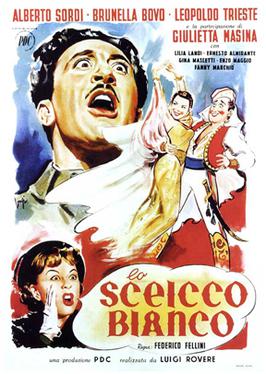 |
| Marcello Mastroianni in La Dolce Vita |
Cast: Marcello Mastroianni, Anita Ekberg, Anouk Aimee, Yvonne Furneaux, Magali Noël, Alain Cuny, Annibale Ninchi, Walter Santesso, Valeria Ciangottini, Riccardo Garroni, Alain Dijon, Lex Barker, Jacques Sernas, Nadia Gray. Screenplay: Federico Fellini, Ennio Flaiano, Tullio Pinelli, Brunello Rondi. Cinematography: Otello Martelli. Production design: Piero Gherardi. Film editing: Leo Catozzo. Music: Nino Rota.
La Dolce Vita was among the celebrated international films that challenged Hollywood's hegemony in 1960, including René Clément's Purple Noon, Jean-Luc Godard's Breathless, Michelangelo Antonioni's L'Avventura, Luchino Visconti's Rocco and His Brothers, and Yasujiro Ozu's Late Autumn. It established Federico Fellini as one of the world's most important filmmakers. I was very young when I first saw it, and it dazzled me with its nose-thumbing satire of a shallow, hedonistic culture. I remember being impressed particularly by the scene at the home of Steiner (Alain Cuny), the ill-fated intellectual whose life and ideas also made their mark on Marcello Rubini (Marcello Mastroianni), Fellini's protagonist, a journalist with ambitions to become a "serious" writer. What I missed at that time was that Steiner was as much a target of satire as the movie stars, aristocrats, and hucksters that swarm around Marcello's Rome. Steiner's soiree is as empty and sterile, as decadent in its own way as the scenes of boozing and party-hopping and religious mania. But at least there's an energy to those scenes that keeps the film alive. Even though Steiner's story is tragic, La Dolce Vita is a profoundly anti-intellectual movie. And of all the films I just named, despite its technical prowess, it seems to me the least impressive, the one most touched by the passage of time.






















